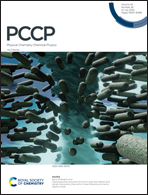Clarifying notes on the bonding analysis adopted by the energy decomposition analysis
Abstract
We discuss the fundamental aspects of the EDA-NOCV method and address some critical comments that have been made recently. The EDA-NOCV method unlike most other methods focuses on the process of bond formation between the interacting species and not just only on the analysis of the finally formed bond. This is demonstrated using LiF as an example. There is a difference between the interactions between the initial species which form the bond and are also the final product of bond cleavage, and the interactions between the fragments in the eventually formed molecule. The flexibility of the method allows the choice of the interacting fragments which helps to identify the charge and electron configuration of the fragments which describe the bond. This is very helpful in cases where the bond may be described with several Lewis structures. We reject the idea that it would be a disadvantage to have “bond path functions” as the energy components in the EDA, which actually indicate the variability of the method. The bonding analysis in a different sequence of the bond formation gives important results for the various questions that can be asked. This is demonstrated by using CH2, CO2 and the formation of a guanine quartet as examples. The fact that a bond is always defined by the bound molecule, the fragments, and their states is universal and deeply physical, as we show here again for various examples. The results of the EDA-NOCV method are in full accordance with the physical mechanism of the chemical bond as revealed by Ruedenberg.

- This article is part of the themed collection: 2022 PCCP HOT Articles


 Please wait while we load your content...
Please wait while we load your content...